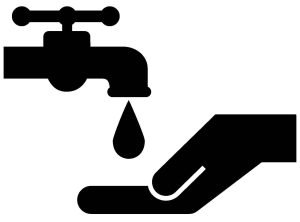Red Hill Water Information
To protect public health and the environment for all of Hawai‘i, DOH maintains this page to provide information related to the U.S. Navy’s Red Hill Bulk Fuel Storage Facility.
News Regulatory Updates Orders, Plans, & Letters Testing /Health Survey Resource Media Library
Related DOH Websites
UST Program RH Website FTAC Meeting Info RH Environ Technical Docs

Please report issues Online Here or contact DOH’s Safe Drinking Water Branch at (808) 586-4258 or by Email.
> FAQ Navy Water Contamination
April 30, 2024 | DOH Rejects Red Hill Consolidated Groundwater Sampling Plan November 14, 2023 | DOH to Host FTAC Meeting on November 15 October 10, 2023 | DOH Conditionally Approves Defueling of Red Hill Tanks August 28, 2023 | DOH Conditionally Approves Red Hill Repairs, Repacking Plan July 12, 2023 | DOH Conditionally Approves Defueling of Red Hill Surge Tanks June 24, 2023 | DOH Conditionally Approves Red Hill Defueling Plan June 24, 2023 | DOH Publishes Red Hill Exposure Assessment June 2, 2023 | DOH to Host Red Hill Open House, FTAC Meeting June 5 and 6, 2023 May 31, 2023 | Flyer for June 5, 2023 DOH Red Hill Open House May 16, 2023 | DOH to review updated Red Hill Defueling Plan May 5, 2023 | DOH Statement on release of Department of Defense’s AFFF Spill Investigation January 27, 2023 | DOH releases soil data from AFFF release at Red Hill January 17, 2023 | DOH to participate in Red Hill open house December 2, 2022 | Red Hill AFFF fire suppressant spill – Dec. 2 update November 30, 2022 | Red Hill AFFF fire suppressant spill – Nov. 30 update November 29, 2022 | DOH investigating Red Hill AFFF fire suppressant spill October 7, 2022 | DOH conditionally approves first phase of Red Hill refueling September 7, 2022 | DOH releases updated Red Hill defueling plan July 26, 2022 | DOH disapproves DOD’s Red Hill defueling plan June 30, 2022 | DOH releases Red Hill defueling plan, command investigation June 29, 2022 | DOH Red Hill Status Report #4 May 27, 2022 | DOH: Contractor’s report on Red Hill defueling outlines extensive, critical repairs May 26, 2022 | DOH, CDC/ATSDR Red Hill survey results assess health effects of contamination May 19, 2022 | DOH Red Hill Status Report #3 May 9, 2022 | Navy waives right to contest DOH Red Hill Emergency Order May 4, 2022 | DOH Red Hill Status Report #2 April 22, 2022 | DOH statement on Navy’s dismissal of Red Hill appeals April 20, 2022 | DOH Red Hill Status Report #1 April 1, 2022 | DOH investigating Red Hill release of fuel and water mixture March 18, 2022 | DOH declares four Navy drinking water distribution system zones safe March 13, 2022 | DOH declares Navy drinking water distribution system Zones A3 & D2 safe March 11, 2022 | DOH declares Navy drinking water distribution system Zones F1, F2, H2 & H3 safe March 8, 2022 | DOH declares Navy drinking water distribution system Zones D4 & E1 safe March 3, 2022 | DOH declares Navy drinking water distribution system Zones B1, G1, H1 safe February 28, 2022 | Navy in non-compliance with DOH Red Hill Emergency Order February 23, 2022 | DOH declares Navy drinking water distribution system Zone A1 safe February 14, 2022 | DOH declares Navy drinking water distribution system Zone I1 safe February 2, 2022 | DOH statement on Navy appeal of Red Hill emergency order January 31, 2022 | DOH statement on Navy’s intent to appeal Red Hill emergency order January 27, 2022 | DOH grants permit to Navy to remove fuel contamination from Red Hill Shaft January 25, 2022 | DOH releases updated Red Hill groundwater monitoring results January 11, 2022 | DOH/CDC Health survey expanded to include all Navy Water System users January 4, 2022 | Survey of civilians affected by Navy water system contamination to begin Jan. 4 January 3, 2022 | DOH Upholds Hearings Officer’s Recommendation on Red Hill Emergency Order December 16, 2021 | Red Hill emergency order evidentiary hearing scheduled for Monday December 15, 2021 | Hawai‘i Department of Health releases 27 new Navy Water System test results December 8, 2021 | Petroleum contamination reported in Navy’s Aiea Halawa shaft December 7, 2021 | Hawai‘i Department of Health orders Navy to suspend operations December 3, 2021 | DOH receives initial results from Navy water system tests December 1, 2021 | Preliminary results detect petroleum product in Navy water system Defueling Documents 3/27/2024 – DOH Concurrence on JTF Defueling Obligation Completed 1/30/2024 – DOH No Further Comments on Defueling Plan Supp. 3 1/24/2024 – DOH Conditional Approval of Repair No. INC 025 Revised QV Report 1/18/2024 – JTF Defueling Repair No. INC 025 QV Report 1/4/2024 – DOH Conditional Approval of Non-Destructive Residual Fuel Removal 1/3/2024 – DOH Conditional Approval of Repair No. DEF 002 QV Report 12/29/2023 – JTF Defueling Repair No. DEF 002 QV Report 12/4/2023 – DOH Final Unpacking Plan Conditional Approval 11/27/2023 – DOH Concurrence with Accelerated Defueling Schedule 11/14/2023 – DOH Conditional Approval of Repair No. DEF 001 QV Report 11/14/2023 – Defueling Plan Supplement 3 11/3/2023 – JTF Defueling Repair No. DEF 001 QV Report 10/10/2023 – DOH Conditional Approval of Defueling Tank Mains and Bottoms 9/25/2023 – DOH Conditional Approval of September Repair QV Report 9/19/2023 – JTF September Repair QV Report 9/12/2023 – DOH Conditional Approval of August (3 of 3) Repair QV Reports 9/4/2023 – DOH Response to Repacking Repair QV Report (No. 84 Rev. 1) 9/2/2023 – JTF Repacking Repair QV Report (No. 84 Rev. 1) 8/24/2023 – DOH Conditional Approval of Repacking 8/24/2023 – DOH Conditional Approval of August (2 of 3) Repair QV Reports 8/23/2023 – DOH Response to JTF Request to Temporarily Defer Select Repairs 8/23/2023 – JTF August (3 of 3) Repair QV Reports 8/21/2023 – DOH Conditional Approval of August (1 of 3) Repair QV Reports 8/11/2023 – JTF August (2 of 3) Repair QV Reports 8/7/2023 – DOH Conditional Approval of June (2 of 3) Repair QV Reports 8/4/2023 – DOH Response to JTF May 31, 2023 Letter on Surge Analysis 8/4/2023 – DOH Conditional Approval of June (3 of 3) Repair QV Reports 8/4/2023 – JTF August (1 of 3) Repair QV Reports 8/2/2023 – DOH Conditional Approval of July (2 of 4) Repair QV Reports 8/2/2023 – DOH Conditional Approval of July (4 of 4) Repair QV Reports 7/28/2023 – DOH Conditional Approval of July (3 of 4) Repair QV Reports 7/27/2023 – JTF July (4 of 4) Repair QV Reports 7/24/2023 – DOH Response to July (1 of 4) Repair QV Reports 7/20/2023 – JTF July (3 of 4) Repair QV Reports 7/17/2023 – DOH Conditional Approval of April Repair QV Reports 7/17/2023 – JTF July (2 of 4) Repair QV Reports 7/11/2023 – JTF July (1 of 4) Repair QV Reports 7/7/2023 – DOH Conditional Approval of Surge Tank Draining 7/7/2023 – JTF Surge Tank Draining Repair QV Report (No. INC 032) 6/30/2023 – JTF June (3 of 3) Repair QV Reports 6/29/2023 – DOH Conditional Approval of May Repair QV Reports 6/26/2023 – DOH Conditional Approval of June (1 of 3) Repair QV Reports 6/26/2023 – JTF June (2 of 3) Repair QV Reports 6/23/2023 – DOH Defueling Plan Conditional Approval 6/19/2023 – DOH Comments on AFFF Reclamation Line Repair Plan 6/15/2023 – JTF June (1 of 3) Repair QV Reports 6/2/2023 – AFFF Reclamation Line Repair Plan 6/2/2023 – AFFF Reclamation Line Repair Plan, Ref (a) 6/2/2023 – AFFF Reclamation Line Repair Plan, Ref (b) 5/31/2023 – JTF May Repair QV Reports 5/31/2023 – JTF Response to DOH Comments on Surge Analysis 5/16/2023 – Defueling Plan Supplement 2 5/16/2023 – Defueling Plan Supplement 2, Enclosure 1 5/16/2023 – Defueling Plan Supplement 2, Enclosure 2 5/16/2023 – Defueling Plan Supplement 2, Enclosure 3 5/16/2023 – Defueling Plan Supplement 2, Enclosure 4 5/16/2023 – Defueling Plan Supplement 2, Enclosure 5 5/16/2023 – Defueling Plan Supplement 2, Enclosure 6 5/16/2023 – Defueling Plan Supplement 2, Enclosure 7 5/18/2023 – Defueling Plan Supplement 2, Enclosure 8 5/4/2023 – JTF April Repair QV Reports 4/21/2023 – DOH Conditional Approval of Feb. and March 2023 Repair QV Reports 4/14/2023 – JTF March Repair QV Reports 3/24/2023 – DOH Comments on JTF 2/22/2023 Repair Responses 3/23/2023 – JTF February Repair QV Reports 2/22/2023 – JTF Responses to DOH 1/13/2023 Repair Comments 1/27/2023 – DOH Conditional Approval of Third-Party Quality Validation Plan 1/13/2023 – DOH Conditional Approval of 2 Repair/Enhancement List Deviations 11/10/2022 – DOH Third-Party Quality Validation Plan Comments (names redacted by JTF) 11/8/2022 – DOH Repair/Enhancement List Comments (names redacted by JTF) 11/1/2022 – Third-Party Quality Validation Plan 10/27/2022 – Repair/Enhancement List 10/24/2022 – Repair/Enhancement List, Enclosure 1 (Repair/Enhancement List) 10/24/2022 – Repair/Enhancement List, Enclosure 2 10/24/2022 – Repair/Enhancement List, Enclosure 3 10/4/2022 – DOH Unpacking Plan Conditional Approval 9/28/2022 – Defueling Plan Supplement 1.B, with Enclosure 1 9/28/2022 – Defueling Plan Supplement 1.B, Enclosure 2 9/28/2022 – Defueling Plan Supplement 1.B, Enclosure 3 9/28/2022 – Defueling Plan Supplement 1.B, Enclosure 4 9/28/2022 – Defueling Plan Supplement 1.B, Enclosure 5 9/28/2022 – Defueling Plan Supplement 1.B, Enclosure 6 9/27/2022 – Revised Unpacking Plan 9/19/2022 – DOH Unpacking Plan Comments (with Navy responses) 9/7/2022 – Defueling Plan Supplement 1.A 9/7/2022 – Defueling Plan Supplement 1.A, Enclosure a (Unpacking Plan) 9/7/2022 – Defueling Plan Supplement 1.A, Enclosure b 9/7/2022 – Defueling Plan Supplement 1.A, Transmittal 1a (NDAA Report) 9/7/2022 – Defueling Plan Supplement 1.A, Transmittal 1b (NDAA Report) 9/7/2022 – Defueling Plan Supplement 1.A, Transmittal 1c (NDAA Report) 9/7/2022 – Defueling Plan Supplement 1.A, Transmittal 2 9/7/2022 – Defueling Plan Supplement 1.A, Transmittal 2, Attachment A 9/7/2022 – Defueling Plan Supplement 1.A, Transmittal 2, Attachment B 9/7/2022 – Defueling Plan Supplement 1.A, Transmittal 2, Attachment J 9/7/2022 – Defueling Plan Supplement 1.A, Transmittal 2, Attachment K 9/7/2022 – Defueling Plan Supplement 1.A, Transmittal 3 Closure Plan Documents 6/28/2024 – Tank Closure Plan Supplement 3 6/28/2024 – Tank Closure Plan Supplement 3, Enclosure 1 (Site Assessment Work Plan) 6/28/2024 – Tank Closure Plan Supplement 3, Enclosure 2 6/20/2024 – Navy Revised Tank Cleaning Verification Plan, Enclosure 1 (response to DOH comments) 6/20/2024 – Navy Revised Tank Cleaning Verification Plan, Enclosure 2 6/18/2024 – DOH Response to Navy Request to Modify Air Monitoring Reporting Requirements 6/6/2024 – DOH Revised Tank Cleaning Verification Plan Comments 5/30/2024 – Navy Closure Integrated Master Schedule 5/29/2024 – DOH Conditional Approval to Begin Active Ventilation 5/17/2024 – DOH Response to Navy May 2, 2024 Air Monitoring Letter 5/17/2024 – Navy Revised Tank Cleaning Verification Plan 5/17/2024 – Navy Revised Tank Cleaning Verification Plan, Enclosure 2 (responses to DOH comments) 5/17/2024 – Navy Revised Tank Cleaning Verification Plan, Enclosure 3 5/17/2024 – Navy Revised Tank Cleaning Verification Plan, Enclosure 4 5/14/2024 – DOH Conditional Approval to Begin Tanks 7 & 8 Floatable Residual Fuel Removal 5/9/2024 – DOH Revised Tank Cleaning Verification Plan Comments 5/2/2024 – Navy Letter Regarding Air Monitoring Plan 5/2/2024 – Navy Closure Integrated Master Schedule 4/29/2024 – Navy Responses to EPA Comments on Feb 7, 2024 Tank Cleaning Submission 4/22/2024 – DOH Disapproval of Groundwater Sampling Plan 4/22/2024 – DOH Air Monitoring Plan Expectations 4/15/2024 – Navy Revised Tank Cleaning Verification Plan 4/15/2024 – DOH Response to Site Assessment Scoping Tech Memo 4/12/2024 – Navy Air Monitoring Plan 3/29/2024 – Navy Closure Integrated Master Schedule 3/18/2024 – Navy Response to DOH Air Monitoring Plan Requirement 3/12/2024 – DOH Air Monitoring Plan Requirement 3/12/2024 – Navy Response to DOH Disapproval of Tank Cleaning Verification Plan 2/29/2024 – Navy Closure Integrated Master Schedule 2/8/2024 – DOH Disapproval of Tank Cleaning Verification Plan 2/7/2024 – Navy Responses to DOH Tank Cleaning Plan Conditional Approval 1/26/2024 – Navy Closure Integrated Master Schedule 1/18/2024 – DOH Conditional Approval of Tank Cleaning Plan & Comments on Dec 15, 2023 Submission 1/12/2024 – Navy Tank Cleaning Verification Plan 12/19/2023 – DOH Expectations for Closure Site Assessment 12/15/2023 – Navy Responses to DOH Tank Cleaning Plan Comments 12/15/2023 – Navy Responses to EPA Tank Cleaning Plan Comments 11/15/2023 – DOH Response to Tank Cleaning Plan 10/2/2023 – Navy Responses to DOH Supp. 2 Comments 9/8/2023 – DOH Response to Request for Concurrence 7/26/2023 – DOH Tank Closure Plan Supp. 2 Comments 7/14/2023 – Navy Responses to DOH Supp. 1 Comments 7/14/2023 – Navy Responses to DOH Supp. 1 Comments, Enclosure 2 7/14/2023 – Navy Responses to DOH Supp. 1 Comments, Enclosure 3 7/14/2023 – Navy Responses to DOH Supp. 1 Comments, Enclosure 4 5/31/2023 – Tank Closure Plan Supplement 2 5/31/2023 – Tank Closure Plan Supplement 2, Enclosure 1 5/31/2023 – Tank Closure Plan Supplement 2, Enclosure 2 5/31/2023 – Tank Closure Plan Supplement 2, Enclosure 3 5/3/2023 – DOH Closure Plan Disapproval (with Supp. 1 Comments) 3/15/2023 – DOH Alternatives Analysis Comments 2/28/2023 – Tank Closure Plan Supplement 1 2/28/2023 – Tank Closure Plan Supplement 1, Enclosure 1 2/28/2023 – Tank Closure Plan Supplement 1, Enclosure 2 2/28/2023 – Tank Closure Plan Supplement 1, Enclosure 3 2/28/2023 – Tank Closure Plan Supplement 1, Enclosure 4 2/28/2023 – Tank Closure Plan Supplement 1, Enclosure 5 12/22/2022 – Alternatives Analysis 12/22/2022 – Alternatives Analysis, Enclosure 1 12/22/2022 – Alternatives Analysis, Enclosure 2 12/22/2022 – Alternatives Analysis, Enclosure 3 12/22/2022 – Alternatives Analysis, Enclosure 4 1/10/2023 – DOH Tank Closure Plan Comments DOD Registry Phone 1-800-984-8523 11/15/2023 – DOH Response to Red Hill Shaft Flow Optimization Study Report 8/9/2023 – DOH Response to Request to Reduce Red Hill Shaft Pumping 6/28/2023 – Groundwater Protection Plan Update, Defueling Revision 5/5/2023 – DOH Request for Information 1/27/2023 – Red Hill Shaft Flow Optimization Work Plan 6/29/2022 – Drinking Water Long-Term Monitoring Plan 5/27/2022 – Assessment Report of Red Hill Underground Fuel Storage Facility 5/6/2022 – DOH Emergency Order 1/26/2022 – Red Hill Shaft Recovery and Monitoring Plan 1/4/2022 – Non-Residential Flushing Plan 12/28/2021 – Single Family Home Flushing Plan Checklist and Standard Operating Procedures 12/14/2021 – Interagency Drinking Water System (IDWS) Team Drinking Water Sampling Plan 12/8/2021 – DOH Directive on Flushing Requirements Location(s) Sampled Location(s) Sampled The DOH and the Centers for Disease Control and Prevention/Agency for Toxic Substances and Disease Registry (CDC/ATSDR) conducted a follow-up survey in September 2022 to learn more about the experience of people affected by the petroleum contamination in the U.S. Navy’s Joint Base Pearl Harbor-Hickam drinking water system. See Results The initial Assessment of Chemical Exposure health impact survey conducted in January and February 2022 had over 2,200 participants. People submitted 2,289 survey responses. See Results Red Hill Clinic PFAS Petroleum Hydrocarbons Stress Health Survey (Closed)  NEWS – PRESS RELEASES
NEWS – PRESS RELEASES
May 30, 2024 | DOH Conditionally Approves Red Hill Air Quality Monitoring Plan
May 22, 2024 | DOH Releases Findings of Independent Forensic Investigation of Navy Water System
March 5, 2024 | DOH Hosting FTAC Meeting
REGULATORY UPDATES

3/28/2024 – DOH Reiteration of Air Monitoring Plan Requirement
ORDERS, PLANS, AND DOH LETTERS

Location Testing Results

Result (Petroleum Product Detected or Not Detected)
Date of Collection
Red Hill Water Supply Distribution System
Detected
November 24, 2021
Nimitz Elementary School and Pearl Harbor Elementary School
Not Detected
November 29, 2021
Aliamanu Child Development Center
Detected
December 3, 2021
Eagle Circle and Milo Lane Residences
Detected
December 3, 2021
Red Hill Shaft and Upper Storage Tank
Detected
December 5, 2021
Dovekie Avenue site: 974572
Not Detected
December 9, 2021
Halawa Correctional Facility
Not Detected
December 9, 2021
Birch Circle
Not Detected
December 8, 2021
Bittern Avenue
Not Detected
December 9, 2021
106th Street site: 974576
Not Detected
December 9, 2021
Navy’s Aiea Halawa Shaft
Not Detected
December 9, 2021
Navy’s Halawa Storage Tank
Not Detected
December 9, 2021
Iroquois Point Elementary School
Not Detected
December 7, 2021
Navy’s Waiawa Shaft
Not Detected
December 7, 2021
McGrew site: 974257
Not Detected
December 7, 2021
McGrew site: 974256
Not Detected
December 7, 2021
Birch
Not Detected
December 7, 2021
106th Street site: 974577
Not Detected
December 9, 2021
Iroquois Avenue site: 974579
Not Detected
December 9, 2021
McGrew Loop site: 974587
Not Detected
December 8, 2021
Octopus Lane
Not Detected
December 8, 2021
Mokupea Place
Not Detected
December 9, 2021
3rd Street
Not Detected
December 9, 2021
Ibis Avenue
Not Detected
December 9, 2021
Honu Loop
Not Detected
December 8, 2021
Hekau Street site: 974580
Not Detected
December 8, 2021
McGrew Loop site: 974586
Detected
December 8, 2021
Edgewater Drive
Detected
December 9, 2021
Dovekie Avenue site: 974583
Detected
December 9, 2021
Hekau Street site: 974259
Detected
December 7, 2021
Iroquois Avenue site: 974253
Detected
December 7, 2021
Drinking Water Distribution System Recovery Plan Zone H2
Detected
December 26, 2021
Not Detected
January, 2024
Result (PFAS Detected or Not Detected)
Date of Collection
Sampled by Navy: Red Hill Shaft
Not Detected
December 11, 2021
Sampled by DOH: 1301 McMurty Court; 187 Honohono Street; 137 Honohono Street; and 211 Mercury, Hickam Communities Building
Not Detected
December 18, 2021
Sampled by DOH: Nex Commissary 4725 Bouganville Drive; Bloche Arena – A Avenue; Makalapa Clinic – 1257 Makalapa Road; and Lockwood Hall – Dealy Circle
Detected at Lockwood Hall only (below DOH Environmental Action Levels at the time)
December 18, 2021
Sampled by DOH: Radford Terrace Community Center (Murray Street); 619 Poole Street; Othana Navy Communities; 4999 Kidd Court
Not Detected
December 18, 2021
Sampled by Navy: Red Hill Shaft
Detected (below DOH Environmental Action Levels; results may be invalid because Navy divers did not use the proper sampling procedures, sampling bottles were glass, and divers were wearing suits and gloves likely containing PFAS)
December 20 and 27, 2021
Sampled by DOH: Red Hill Shaft
Not Detected
December 13, 2022
Health Impact Survey
Resource Media Library

Red Hill Clinic | Makalapa Flyer
Red Hill Clinic | FAQ Website
DOH HEER Office | PFAS Website
DOH | Fact Sheet: Actions to Evaluate and Reduce the Risk of PFAS in Hawaii
DOH | Fact Sheet: General PFAS Information
DOH | Fact Sheet: Health Effects of Petroleum Hydrocarbons in Water
DOH | Fact Sheet: What Are Petroleum Hydrocarbons?
DOH Toxicologist | FOR PROVIDERS |Medical Advisory : Drinking Water Petroleum Exposure
CDC-ATSDR | Fact Sheet: Are you worried about the water, soil, or air in your community?
CDC-ATSDR | Video: Stress: A Normal Response to Environmental Contamination
DOH Public Health Team | Health Assessment of Residents Impacted by Navy Water Contamination